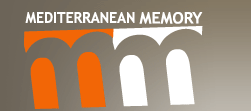The Med-Mem project
Med-Mem: Sharing our Mediterranean Audiovisual Heritage
Initiated by Ina under the auspices of COPEAM (Permanent Conference of the Mediterranean Audiovisual Operators) at the request of the holders of audiovisual archives in the Mediterranean region, “Sharing our Mediterranean Audiovisual Heritage (Med-Mem)” offers the general public some 4000 audiovisual documents from the countries in the Mediterranean area. The TV and radio archives, set into their historic and cultural context, are accompanied by a trilingual documentary note (in French, English and Arabic).
Co-funded by the European Union as part of the Euromed Heritage IV programme, Med-Mem strives to raise the profile of a common heritage, and underpins the drive to safeguard Mediterranean audiovisual archives.
The website is accessible to everyone free of charge.
This project brings together 20 partners (see list in Chapter VI) including 14 Mediterranean television corporations, 3 professional bodies, and high-profile cultural and scientific partners.
It forms part of a collaborative partnership, open to all Mediterranean audiovisual archives. The sharing of documentary and technical tools, of policies for safeguarding the audiovisual heritage, and of best legal practices, form an integral part of the project.
Med-Mem targets various audiences:
- The general public, and young people in particular:
They will be able to freely discover the Med-Mem website, the riches of both their own heritage and that of other Mediterranean countries, and to gradually share and appropriate the Mediterranean cultural heritage.
- Researchers, teachers and students:
The will find audiovisual documents with commentaries on the Med-Mem site, offering a range of viewpoints for their research and teaching purposes.
- The holders of audiovisual content, and primarily Mediterranean broadcasters: The visibility of the audiovisual archives put online on the MedMem website provides Mediterranean broadcasters with a new opportunity to raise awareness about the safeguarding and digitalisation of this endangered heritage.
A network of consultation points broadens its reach:
Educational and cultural institutions (museums, libraries, universities, etc.) offer the public website consultation points to broaden its reach.





